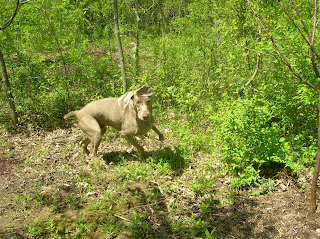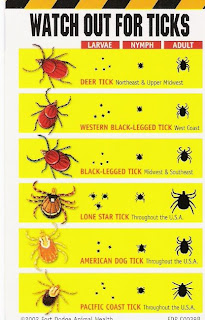In rescue we see many things, one of the most common is parasites and worms. When we pull a dog from a shelter most of the time they are strays and/or not cared for very well.
Worms come in all sizes and shapes.
When dogs are strays they come in contact with all sorts of hazards. The most common being a worm or parasite. When a lost or stray dog gets thirsty they look for water anywhere, in puddles, lakes, ponds, dirty water holes. When they are hungry they will find anything they can to eat, sometimes small animals such as mice, rabbits, maybe a baby bird.
Many of these wild animals have fleas which of course can jump to the dog. Not only are the fleas an itchy annoyance, but they can also cause a dog to get Tapeworm.
Tapeworms like to make themselves at home in the dogs intestines. While in the intestine the Tapeworm grows and absorbs the nutrients meant for the dog. Tapeworms can grow to be larger then most worms dogs come in contact with. They look like a long thin limp noodle.
Hookworms are another worm that dogs can pick up while searching for food and drinking contaminated water. Once again these can be treated -- more then one cycle of treatment is required. These worms are generally very small and are hard to see with the naked eye. However like with Tapeworm and other worms, you may see dead ones in your dogs fecal when they are dying off from the medication.
Whipworms occur in a dog when they ingest the eggs or larva from an adult worm. They take a bit less then 3 months to hatch and become adult worms that then live once again in the dogs intestines. These are also small, usually smaller or as small as hooks. They have what looks like a thread at the end of their bodies.
Roundworms are probably the most common and easily recognizable. The best way to describe them is like a white worm. A single dog can carry many roundworms and in their fecal deposit thousands of eggs just waiting for another host. Roundworms are visible to the naked eye.
IT IS IMPORTANT IT YOUR DOG HAS WORMS TO PICK UP THEIR FECAL AS SOON AS THEY GO. This can help prevent reinfection as well has minimize the exposure to any other dogs you may have. Also, do not let your other dogs groom or clean your dog while they have worms.
As aggravating as these worms are with hand washing and a clean yard transmission to a human is extremely low.
All these worms are treatable, if your dog comes in contact with them after a run in the field, walk in the woods, trip to a dog park, or anywhere else they may go.
A simple fecal can check for all these worms and more. To treat worms is fairly easy. Your dogs doctor can give you a liquid or power medication. All the medication must be given and a 2
nd round is
usually required. Always give as directed, this is a toxin or poison, to much can be harmful to your dog, but in the right dosage will kill off the worms without harming your dog.
While your dog is on the medication you may notice some
diareah. Some canned pumpkin can help firm up their stools, don't be alarmed if their stool becomes the color of the canned pumpkin. Also you may notice some dead worms in their stool Don't be alarmed, this is completely normal.
In sever cases as some of us have seen, myself included, when a dog has an advanced case and have a heavy infestation they may vomit some dead worms. Simply clean them up and
immediately use a cleaner to clean the are. Your dog will be OK, it is just another way to rid
themselves of the worms. Luckily this is the exception, not the rule.
Have a safe and happy Spring! We hope you and your pets enjoy the outdoors.
Great Lakes Weim Rescue
http://www.canismajor.com/dog/worms.htmlhttp://www.peteducation.com/article.cfm?c=2+2090&aid=769 (Tapes)
http://www.peteducation.com/article.cfm?c=2+2090&aid=778 (Whips)
http://www.peteducation.com/article.cfm?c=2+2090&aid=747 (Hooks)
http://www.peteducation.com/article.cfm?c=2+2090&aid=762 (Rounds)










